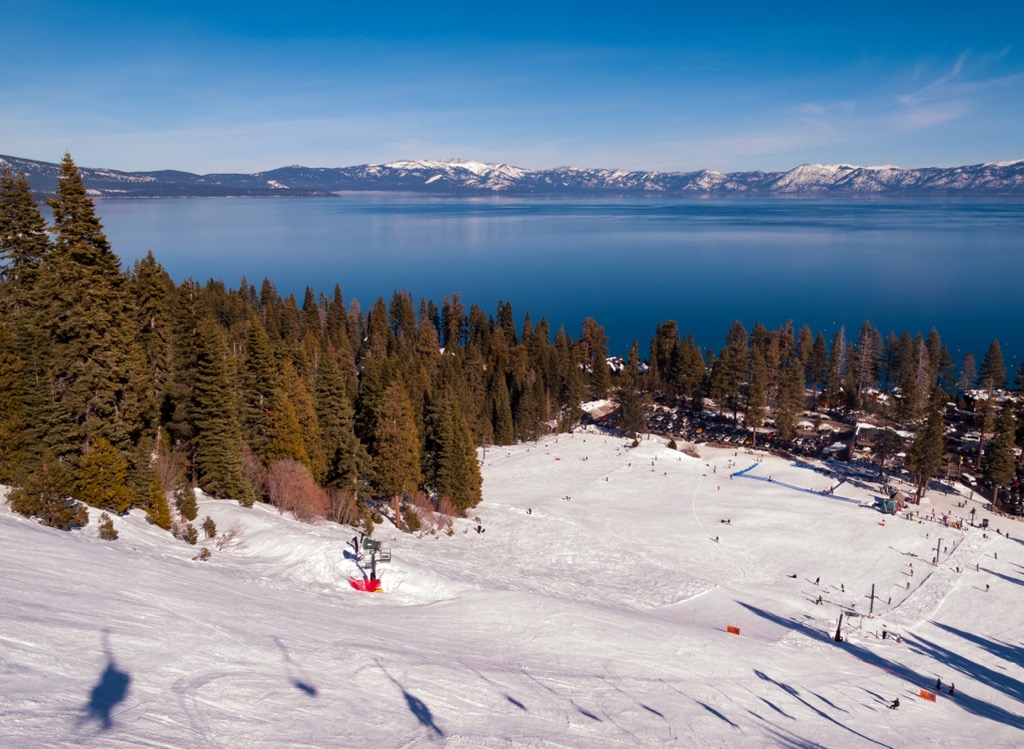Get PeakVisor App
Sign In
Search by GPS coordinates
- Latitude
- ° ' ''
- Longitude
- ° ' ''
- Units of Length
- Temperature

Yes
Cancel
Share ×

Scan the QR code and open PeakVisor on your phone
❤ Wishlist ×
Choose
Delete
Palisades Tahoe is the crown jewel of Lake Tahoe. It sprawls over 6,000 acres (2,428 hectares), with 2,850 ft (869 m) of vertical drop in the upper reaches of the Sierra Nevada Mountains of California, USA. It is the largest resort in the Lake Tahoe area, one of the largest in the United States, and includes some of North America's steepest and most challenging lift-access terrain. Palisades Tahoe’s boundaries have changed considerably over the years, most recently growing to include Alpine Meadows. The resort operates an astounding total of 36 lifts from late November until May, June, or July. It was the site of the 1960 Winter Olympics, which put it on the map as a world-class ski destination.
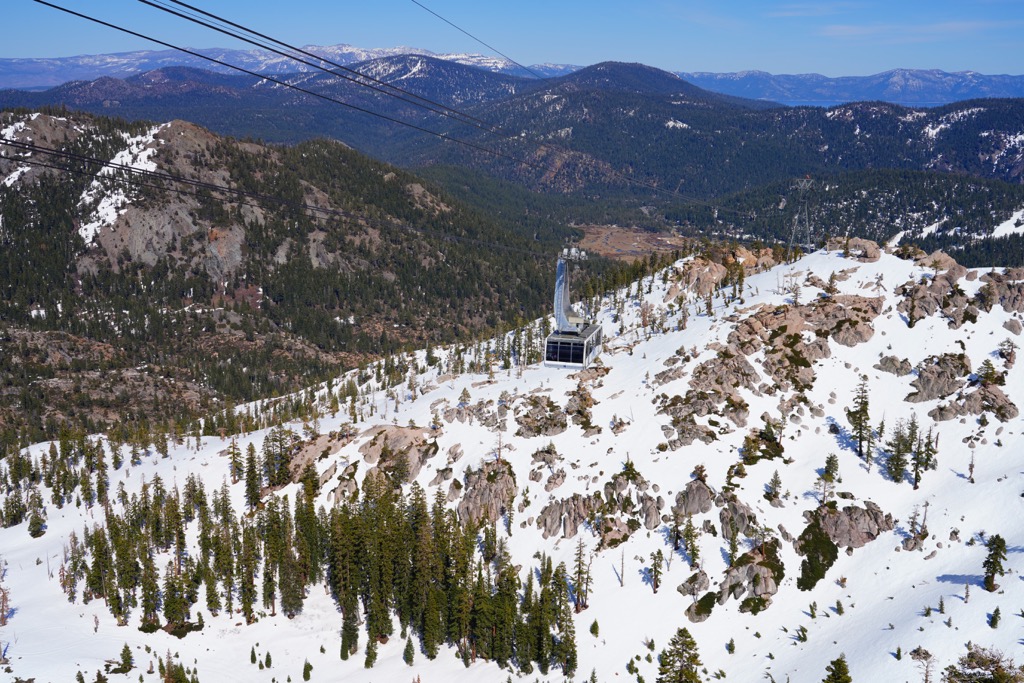
Palisades is on the northwest margin of Lake Tahoe in Placer County, California. The Tahoe National Forest - Truckee Ranger District manages the land. Just a short drive away are the communities surrounding Lake Tahoe, including Truckee and South Lake Tahoe, and the (comparatively) large city of Reno, NV.
The Olympic Valley side of the resort is a vast convex bowl running downhill from a high ridge. There are three major high points here: Granite Chief (9,006 ft, 2,745 m), the resort’s summit, Emigrant Peak (8,774 ft, 2,674 m), and the Palisades (8,885 ft, 2,708 m). The Palisades is less of a peak and more of a steep, wide cliff band. KT-22 Peak (8,070 ft, 2,458 m) and Snow King Peak (7,552 ft, 2,302 m) comprise the mountain’s lower portion. The Alpine Meadows side of Palisades Tahoe unfurls across the northeast and southeast aspects of Ward Peak (8,637 ft, 2,633 m) and the southwest aspect of Scott Peak (8,289 ft, 2,526 m).
Alpine Meadows was originally an independent resort but joined forces with Palisades Tahoe (then called Squaw Valley) in 2016. The two resorts initially offered joint day and season passes but still needed to be structurally linked. However, the distinction became more or less meaningless with the construction of the Base to Base Gondola in 2022. The two resorts are still geographically separated by the rocky south slope of KT-22 Peak and an entire valley. Nevertheless, either ski area is accessible from either village, and a single day or season pass serves both.
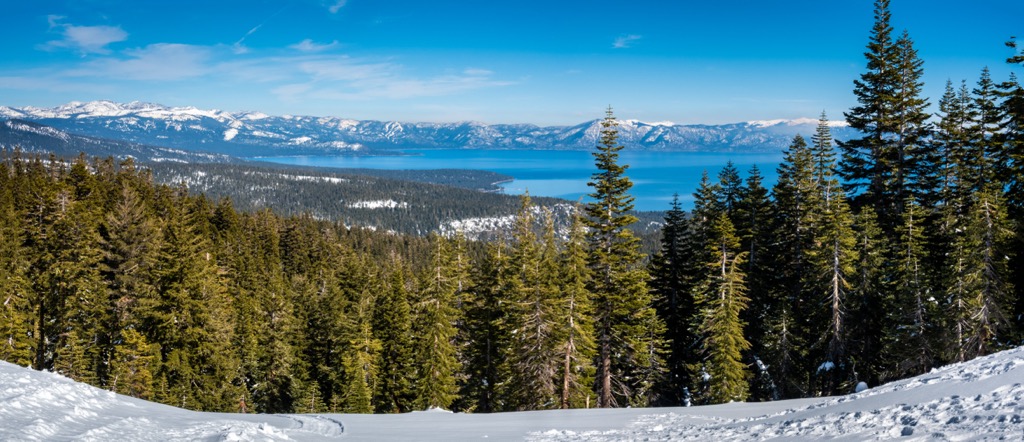
Lake Tahoe is a citadel of peaks high in the mountains. In addition to the difficulties of the steep, mountainous terrain, the storms in this region are colossal. The historic winter of 2022-2023 produced monstrous storms that became world news. It’s common for the entire Tahoe area to see 48 inches (122 cm) of snow in 48 hours. Because of the high moisture content of these Pacific storm systems, rain often mixes in at lower elevations. Heavy precipitation poses a unique challenge for local infrastructure, which works day and night to keep roads open in the cold months. The cocktail of weather conditions often results in dangerous travel situations on Interstate 80 and the local roads in the region. And yet, Lake Tahoe is surrounded by a thriving community that embraces these extreme winter conditions.
The Reno International Airport is just a 50-minute drive from Palisades Tahoe and 35 minutes from Truckee. If you fly into Reno, plan on renting a car. Sacramento International Airport is also an option. Approaching from the west will add some drive time, but there are more options for public transit from the California side of the Sierras.
Daily bus services shuttle skiers to Palisades Tahoe from Sacramento and San Francisco. The bus system can also be helpful if you’re staying in Tahoe and don’t want to deal with driving to the mountain. Free buses run to the resort from Truckee and Tahoe City.
Once you’re at Palisades Tahoe, you must decide which side of the mountain you want to ski. The Olympic Valley and Alpine Meadows sides are connected by the Base to Base Gondola. This gigantic gondola crosses over the summit of KT-22 to connect the two resorts' base areas.
Your other option, of course, is driving from one base to the other. By car, it’s a 10-minute drive, but in snowy conditions, this can be a monumental effort. With gondola access included in your pass, there is no reason to increase road congestion further.
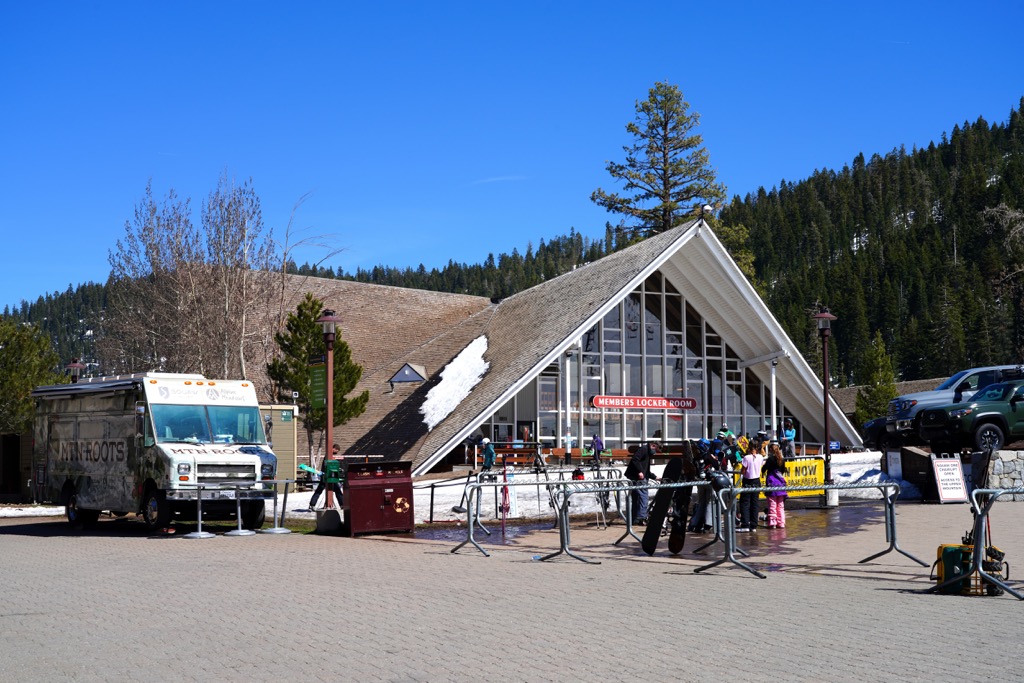
Palisades’ opening and closing dates are almost always dependent on snowpack. Coastal weather can be fickle - sometimes, this means the resort opens as early as late October. Other times lifts don’t start turning until late November. But the area almost always gets enough snow to keep the ski season going into May.
During outstanding seasons (like ‘22-’23), the lifts will continue spinning until July 4th. Staying open into July is uncommon among ski resorts in the US, not just for weather reasons but also restrictions by the US Forest Service. Palisades is lucky to have a season that often lasts seven or eight months.
My recommendation for big ski trips is to wait until after the holidays. Tahoe is a major tourist destination in California, and the holidays are their peak season. Plus, some of the season’s most significant storms tend to hit in February and March.
Overall, it depends on what you’re after. You’ll have good odds for powder skiing in January, February, or March. If you want to go big on Palisades’ cliffs and technical terrain, go in February or March. Be ready for storm skiing. Some weeks are exclusively characterized by wind, blowing snow, and low visibility. However, these days offer incredible powder conditions for veteran storm skiers who use Palisades’ rock bands and old-growth forests for contrast.
If you want to have a fantastic time, soak up the sun, and party with your friends, go in April or May. Spring skiing in California is unbeatable. You are unlikely to have any sort of weather-related resort closures, and the sun will shine almost constantly. The snow becomes incredibly soft every afternoon - sometimes, the corn is almost like powder skiing. As the temperatures creep up in June, you may even see girls in bikinis and guys in board shorts. Most importantly, you’ll spend much more time skiing and less time waiting in line.
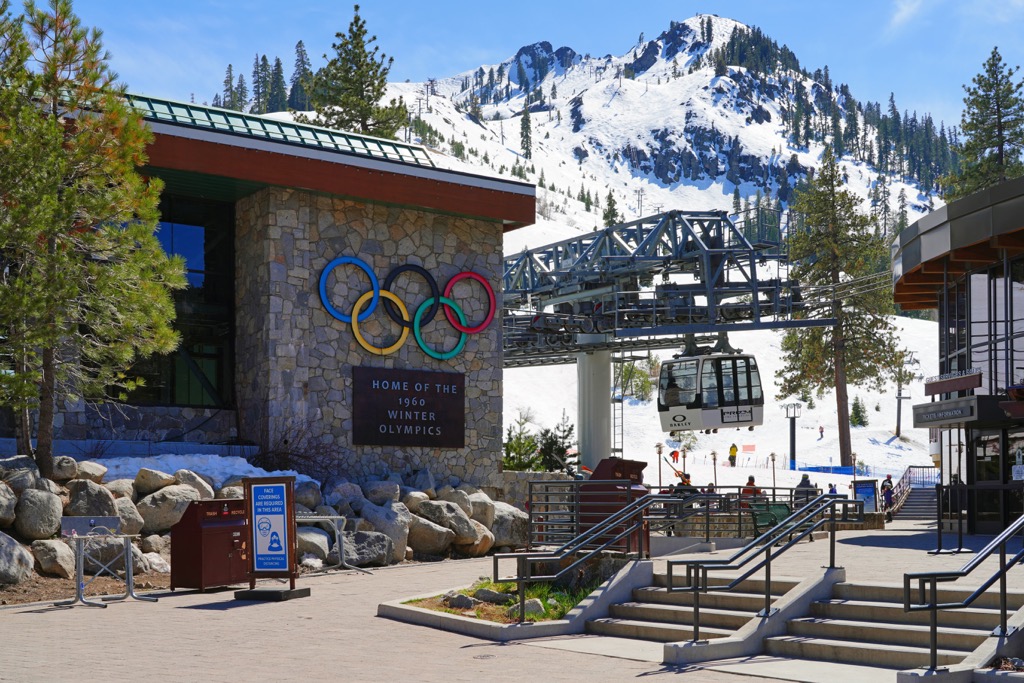
Massive atmospheric river storms produce tons of wet, heavy snow in the Sierra Nevada. Does that mean you can’t get fantastic powder turns here? No, not at all. Light powder days happen but are less common than in Utah, Colorado, or Montana. More common are storms that produce feet upon feet of “Sierra cement,” wet, sticky, heavy snow that piles up fast.
The mountain averages 400 inches (1,016 cm) of snow per year. On big years, season totals will exceed 700 inches (1,778 cm). Because it’s so heavy, this snow doesn’t compact much and stacks up to form an incredibly thick base. While it may not be ideal for powder skiing, the snow’s moisture content creates the world’s best spring skiing.
Every year, Tahoe sees multiple storms producing three to four feet of snow in 48 hours. These storms sound sublime, but sometimes they can be more of a hindrance than a blessing. Roads become choked with snow, lifts sometimes shut down because of buried chairs, and roof avalanches threaten people and property.
The gist is that the weather here is intense. It also means that you must watch the weather closely. The best forecasting in the Tahoe region is indubitably from Bryan Allegretto and the OpenSnow team. The Tahoe Daily Snow is one of the best weather blogs in history. Bryan is a true weather nerd and loves discussing the atmosphere. Follow his daily updates, and you will learn the equivalent of an introductory, college-level meteorology course. You will also be dialed in on the latest forecasts and zones for the best snow conditions.
Storms typically hit the mountain in the lower, middle, and upper layers. Snowfall totals can vary wildly as you progress toward the summit. Sometimes you’ll see heavy snowfall above 8,000 ft (2,438 m), with rain at the mountain's base. Other times, the base will have solid accumulations, while intense winds will scour the upper peak of any fresh snow. The upshot is that the winter season is almost guaranteed to be followed by prodigious months of slush skiing and t-shirt weather in the spring and early summer.
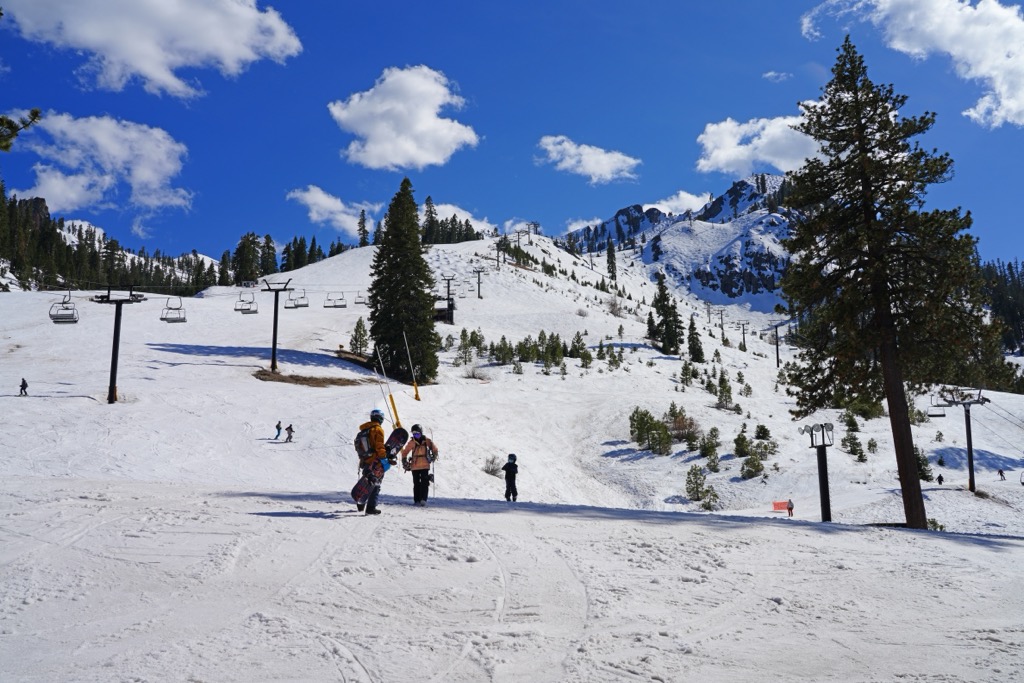
Whether for a day or a month, planning a stint at Palisades is all about the weather. Luckily, it’s a vast resort, and there’s always somewhere to hide, even when poor conditions dominate the mountain. If the wind is whipping, stay on the lower part of the mountain. If it’s raining at the base, head for the upper mountain.
Most North American ski maps are laid over paintings by one person: James Niehues. Once you notice it, you’ll never be able to unsee it. His style is distinctive but doesn’t get in the way of an accurate depiction of the terrain. Niehues is a master of collapsing terrain features so that an entire three-dimensional mountain fits on a single page.
Why am I rambling about this? As of the last few years, Palisades Tahoe is one of the only resorts in the country that has updated its maps and no longer uses the former Niehues map. It’s a matter of taste to some extent, but I think the Niehues map does a much better job of depicting the features of the mountain.
For comparison, here is the new Palisades map. As you can see, the high points are less prominent, the facets of the mountain are less clear, and the terrain feels more cluttered. It also makes the mountain look a lot flatter. Furthermore, the new map diminishes the artistic value that has become a tradition in the North American ski industry. Nevertheless, I’ve provided links to both maps so you can choose your preference.
Palisades is a colossally tall resort covered mainly in broad, open terrain. By contrast, Alpine Meadows is shorter and more forested. The mountain's Olympic Valley side is about 50% larger than the Alpine Meadows side. It’s hard to get a sense of the layout of either resort from the base area, partly because they both have upper bowls hidden from view by ridges. Getting around these peaks can be confusing, but the PeakVisor app makes it much easier to know where you’re going.
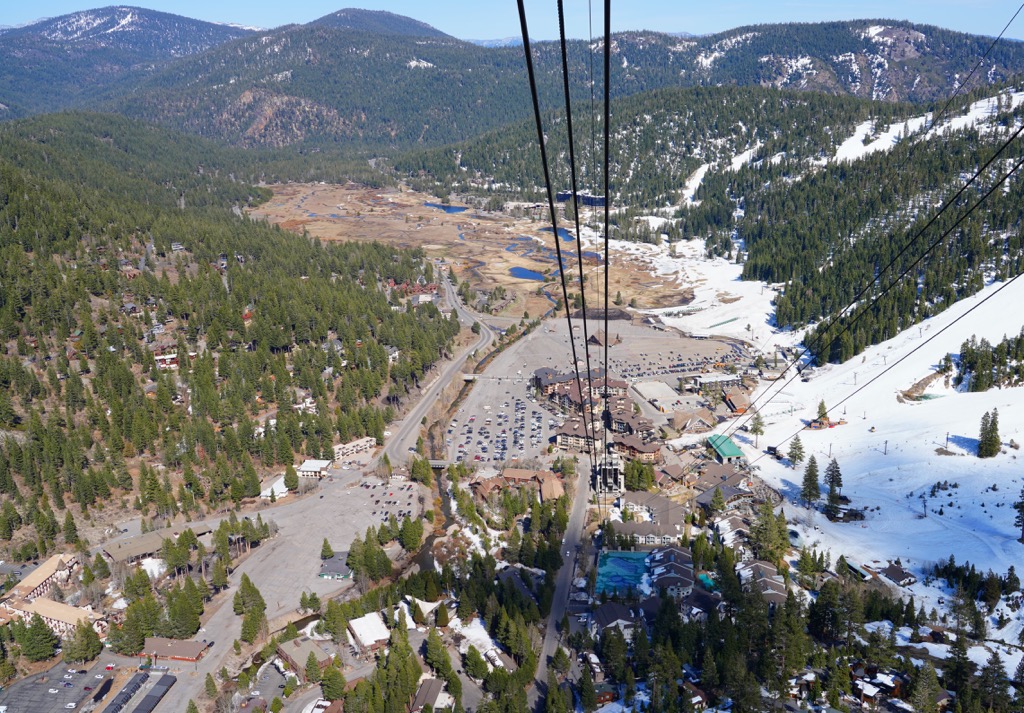
So, let’s start simply - at the base of the Olympic Valley side. From the parking lot, you can see Snow King (accessible by Red Dog Lift) and KT-22 Peak (via KT-22 Lift or the Base to Base Gondola). These mountains define the looker’s left boundary of the resort, which runs along a high ridge to the summit of the Palisades. On the right, you’ll see a large, jagged cliff wall. The boundary runs through the middle, and the Tram and Funitel travel over the top. Between this cliff wall and the summit of KT-22 is a wide canyon.
There are a couple of ways to get to the upper mountain, but the easiest is to take either the Funitel to Gold Coast Lodge or the Tram to High Camp Lodge.
Hopping on the Funitel, you’ll see the upper bowl of Olympic Valley come into view. As you progress up, you’ll see the ridge between KT-22 and Palisades, including North Bowl, Chicken Bowl, Hogsback, and the Palisades itself. The whole ridgeline is accessible by the Headwall Express lift. Further to the right, you’ll see Siberia Bowl, which Siberia Lift services. You can also get to the Palisades by traversing the ridge from the top of Siberia. One of the last things you’ll pass over is Broken Arrow Lift, which takes you straight to the top of the cliff area on the looker’s right.
Arriving at Gold Coast Lodge is magical. The lodge is a bustling hub of activity, with three lifts a short skate-ski away: Siberia, Gold Coast, and Big Blue. The latter two lifts will take you toward the resort’s uppermost ridges, Monument Ridge and Gold Coast Ridge. To get to the top of Emigrant Peak, you’ll have to take one of these, head back down, and then hop on Emigrant Lift.
You can see the upper mountain's Gold Coast and Granite Chief sides from the top of Emigrant Peak. Straight down from Emigrant Peak is High Camp Lodge, where the Tram lets off. High Camp is one area where the new Palisades map does not do justice. The drop from High Camp into the bowl below is steep. There are many fun pistes and challenging off-piste pitches.
Depending on whether you ski left or right from here, you’ll end up at the base of either Silverado or Solitude Lifts. Silverado services the entire pitch that sits under High Camp, and Solitude runs back up the flanks of Emigrant Peak. Traverse skiers’ left from the top of Solitude, and you’ll get to Shirley Lake and Granite Chief Lifts. Shirley Lake Lift gives good access to the trees on the looker’s right of Emigrant, and Granite Chief runs almost to the top of Granite Chief Peak. The Chief is the far-right extent of the lift-accessible terrain at Palisades.
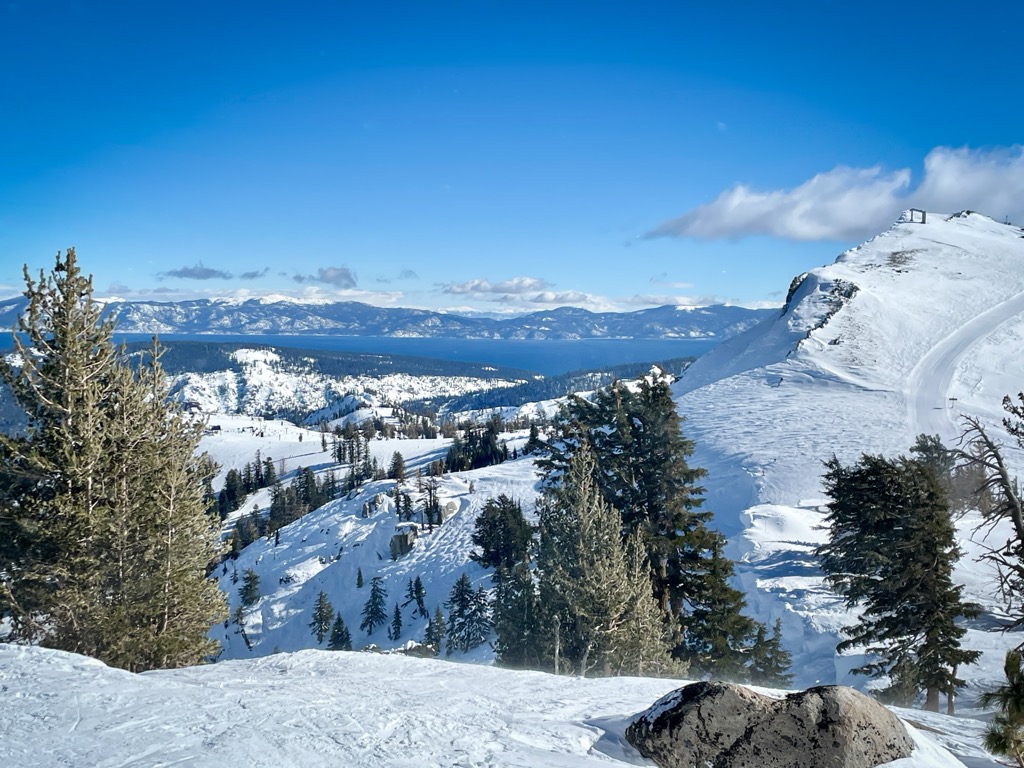
Suppose you don’t want to ski the Olympic Valley side at all. You could just as quickly park at Olympic Valley and take the gondola over KT-22 straight to Alpine Meadows. This gondola is a real feat of engineering, and it’s marvelous to ride. It travels 2.4 miles (3.9 km) and gains 1,729 ft (527m) of vertical over the top of KT-22. You can either get off at the top of KT-22 or continue over a considerable stretch of forest to the Alpine Meadows base area.
From the base of Alpine Meadows, you’ll immediately get an idea of how different this side of the mountain is. For starters, there are far fewer lifts. The lookers’ left side (to the top of Scott Peak) is serviced by just one lift - the Scott Chair. The lookers’ right has three lifts that climb from the base up the flanks of Ward Peak: Roundhouse Express, Summit Express, and Kangaroo Chair.
The easiest way to get to the top of Ward Peak from the base area is to hop on Summit Express, which gives you access to the entire lookers’ right side of the main bowl at Alpine Meadows. The terrain is a massive face with many open bowls and forested sections.
Between the left and right faces is Treeline Cirque Lift, which heads up to a ridge between Ward and Scott Peaks. If you get off the Treeline Cirque Lift and head right, you’ll end up at Alpine Bowl Chair. This lift also runs to the summit of Ward Peak but gives access to the mountain's front and back sides.
Your other option from the top of Treeline Cirque is to head straight back into the back side of Alpine Meadows. Here is yet another large open area of the resort, particularly the looker’s left, which is only accessible via the High Traverse from the top of Alpine Bowl Chair. It extends across a long ridge to another unnamed peak. The entire face below this ridgeline is a mix of open bowls and long pitches of tree skiing.
Heading down from the top of Treeline Cirque, you’ll encounter a mostly forested face running down to the bottom of Sherwood Express Lift. This is the best way to get back to the base area from the backside. If you head down the ridge from Treeline Cirque, you can also get to Lakeview Chair, which covers the lookers’ right side of the resort’s back half. This area has a lot of tree skiing and more mellow pistes. From the top of this lift, you can head left, down to the saddle between Scott and Ward Peaks, and back down to the base area.
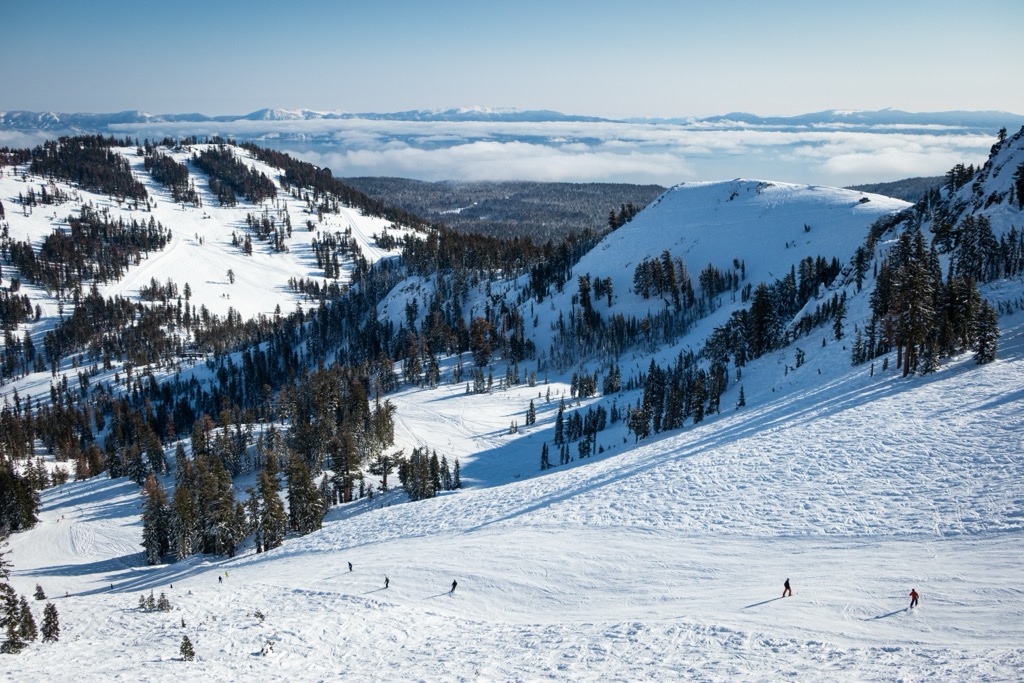
Slopes
Ski lifts
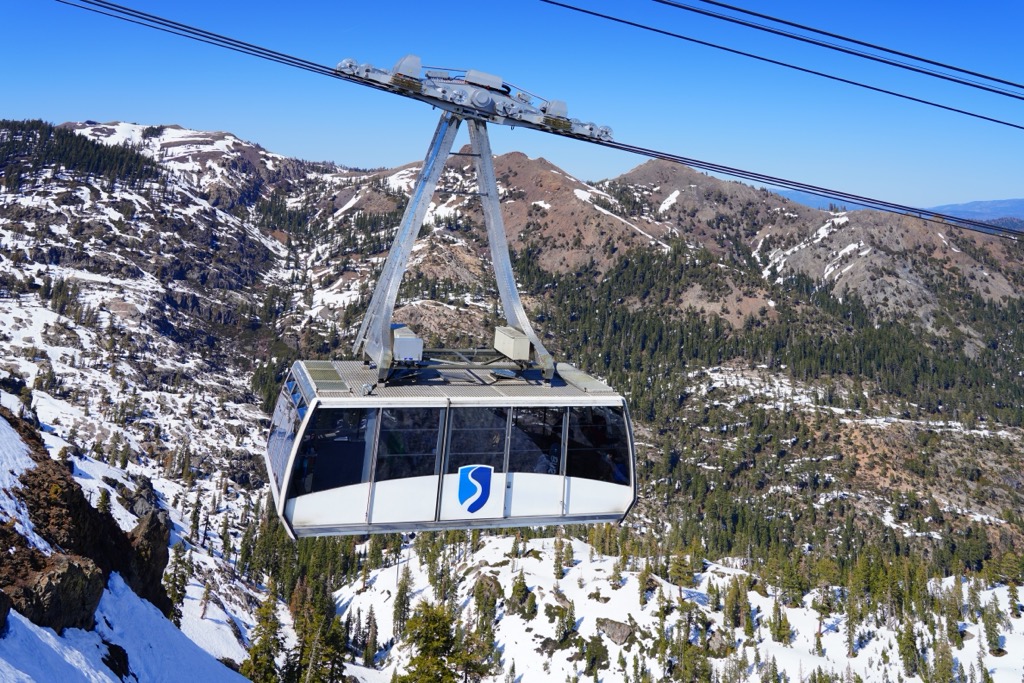
Other features and services
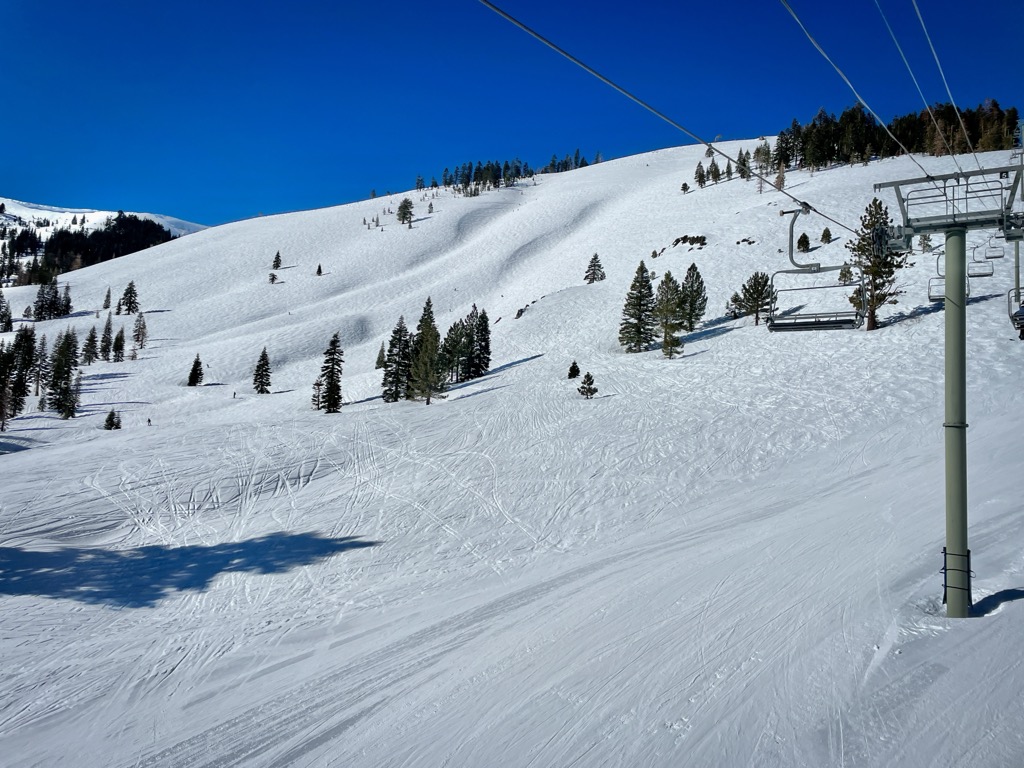
Where should you spend your time on the mountain?
Let’s start at the Olympic Valley base again. You wouldn’t expect the lower mountain to hold some of the resort’s most challenging terrain, but it does. In fact, from the base area, you can only access intermediate and expert terrain. Almost all of KT-22 is steep open-faced skiing, cliffs, or chutes. The lookers’ left side of the peak holds one of the most famous and technical lines at Palisades: McConkey’s. Named for legendary skier Shane McConkey, it features a nearly vertical pitch over a 20+ ft (6+ m) mandatory drop.
McConkey’s gives you a feel for how KT-22 skis. There are a lot of big cliffs and airs around. If you love airtime, it’s the mountain for you. Lower on KT-22 are some intermediate-level groomers that are fun too.
Moving further left, Snow King features a similar level of difficulty. It’s a shorter face but very steep. However, the terrain is much less open and more forest-dominated. Snow King is a prime spot to find leftover powder after a storm. There are a lot of gullies to explore and even some intermediate groomer skiing here.
If you’re just starting skiing or taking lessons, you will probably spend most of your time on the lower mountain. There is a short, mellow slope at the base of Snow King Peak, complete with a rope tow and a triple lift for lessons and first-timers.
At the upper mountain, you see a mix of terrain and difficulty. If this is your first time at Palisades, here are a few areas to check out for skiers of all ability levels:
Beginners should head for Big Blue Express. This lift services most of the mountain’s beginner terrain. But it’s not a “bunny hill.” There are a lot of clusters of trees that are a ton of fun to zigzag through. From the top of Big Blue, you can get to Belmont, Mountain Meadow, and Bailey’s Beach Lifts, perfect for those looking to take it easy and enjoy the mountain.
If you want to branch out a little and try intermediate (blue) runs, hop on Emigrant or Gold Coast Express Lifts. Both options have traverses back to the lift base that are manageable. So even if you’re not ready for full-on blue skiing, you could play it safe and head back to shallower waters. Best of all, each lift has a fantastic view from the top.
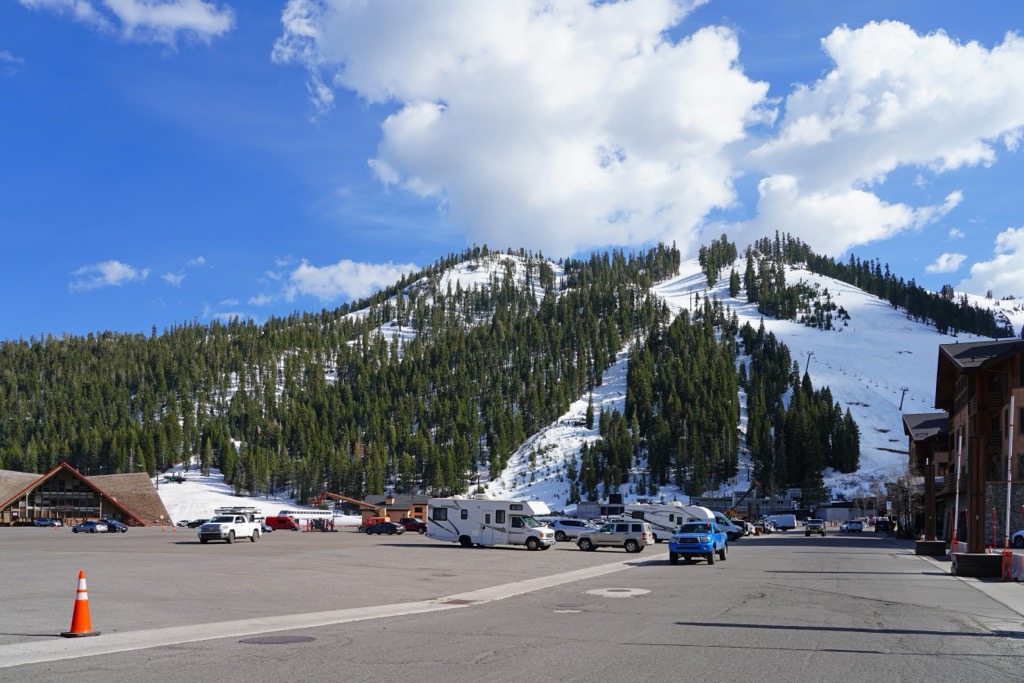
Intermediates will also love Emigrant and Gold Coast. Some manageable off-piste sections on both lifts are perfect if you’re just starting to venture off the groomed runs. You could also head to Siberia Lift. You might not want to head straight down the lift line, but you can take a traverse part of the way down and then drop into one of several much more manageable blue runs back to the bottom.
To check out the Granite Chief Bowl, you could head up Big Blue Lift and drop from the ridgeline, following either Shirley Lake Express or Solitude Lift. There are some steep but wide groomers on this face.
The other option for intermediates is to head straight down from Gold Coast Lodge. The winding network of runs that connects the upper bowl to the base area is a blast to cruise down. It’s a long ride, and if you’re trying to get better at skiing quickly, you’ll appreciate how much longer each run is here. Once at the bottom, hop on Wa She Shu Lift. This lift will take you back to the upper bowl, where you can do it all again.
Experts have the most options by far in the upper bowls. Palisades is considered one of the most challenging resorts in the US; it’s steep, fast, and there are a ton of natural jumps and cliffs around to blast off of. One of my favorite areas at Palisades is Siberia Bowl. You might not want to leave this area if you love chaining small jumps, wind lips, and side hits together.
Freestyle skiers and boarders will want to spend most of their day around Big Blue and Gold Coast Express. Palisades has a world-class terrain park system, and the biggest and best features are all located under these two lifts. Head to Gold Coast if you want to hit big jumps. The cluster of parks under Big Blue features many flowy rail lines and medium-sized jumps.
Heading further to the left, it gets more intense. The entire ridge from the Palisades to KT-22 feels like a jungle of short, fast, technical lines. You’ll have to put in more work traversing there, but almost everything on this ridgeline is bucket list-worthy. Because this zone is visible from the ski lift, the culture of throwing massive hucks and tricks has become known as ‘Squallywood’ - a play on the resort’s former moniker, Squaw Valley.
Next, check out Broken Arrow Lift. The named runs in this area are a little tamer, but the features are absolutely wild. Some of the mountain’s biggest cliffs are here. All you have to worry about is crashing with a crowd of Funitel riders watching you from above. No pressure.
Last, we come to the Granite Chief Bowl. For starters, just dropping into the bowl from High Camp is intense. This face is a mix of big, open steeps and cliffs. There’s a lot of room to spread out under Silverado Lift, and you could easily spend a whole day just exploring this part of the resort. If you want to get further out of the way, head for Granite Chief Lift. The area is experts-only, and it’s a little harder to get to, often leaving it mostly empty. This area has some of the best tree skiing on the Olympic Valley side.
At this point, we’ve only covered a little more than half of the terrain at Palisades Tahoe. There’s still all of Alpine Meadows to check out. If you haven’t pieced it together by now, it will take a lot more than a weekend to see everything this resort has to offer.
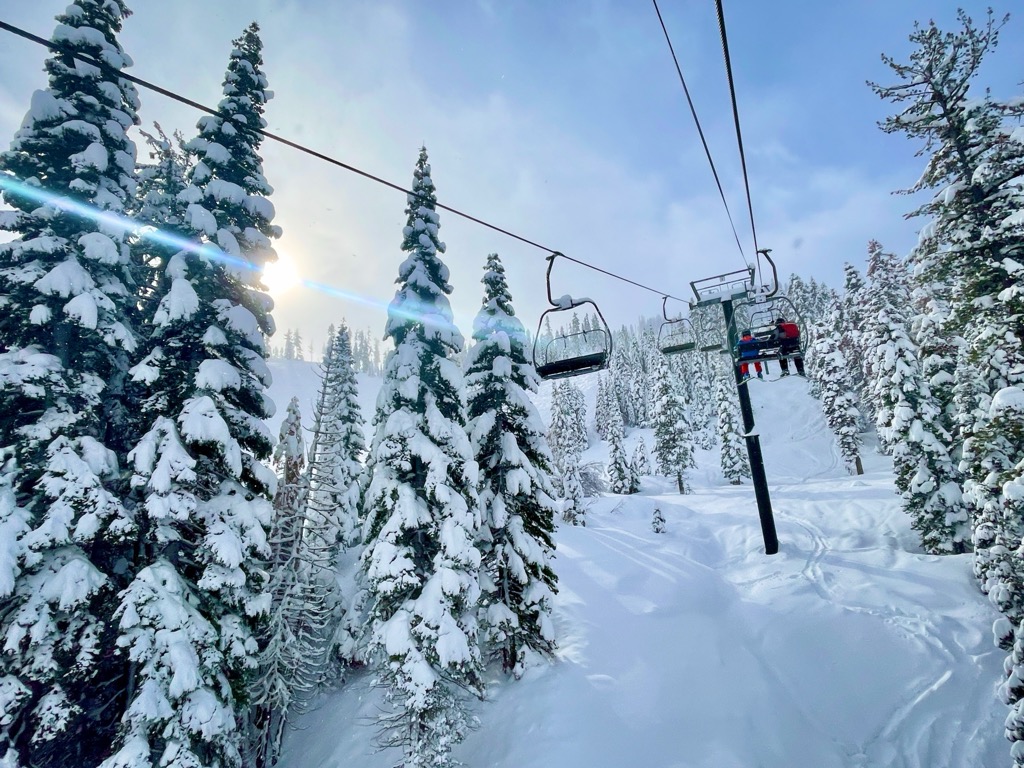
Alpine Meadows is mostly intermediate through expert terrain. Nevertheless, this side of the resort doesn’t feature as much extreme terrain as the Olympic side. Two lifts, the Meadow and Subway Chairs, are beginner-only terrain. But the rest of the lifts are rated for intermediates and experts. As I mentioned, Palisades Tahoe is a rugged resort that caters to expert-level skiers. As a beginner, you must have a solid grasp of the fundamentals before venturing out.
Intermediate skiers have a lot of options at Alpine Meadows, though. I recommend checking out Kangaroo Chair and Summit Express from the base area. Kangaroo Chair is a short ride to open bowl skiing and trees. Summit Express services the longest groomers at Alpine Meadows, which bob and weave through thickets of trees. You’ll notice little pathways and tracks darting in and out of these groves as you descend. If you’re trying to get better at tree skiing, this is the perfect place.
You could also ride up Yellow Chair when heading down from Summit Express. This mid-mountain lift tends to see shorter lift lines and is a solid choice for busy days.
Your other option as an intermediate is to take Treeline Cirque Lift. You can get off midway and head back down to the base. Or, you can take it to the top and drop onto the backside. The back side of Alpine Meadows starts with some interesting forested terrain and then opens up into a few broad faces.
You could either follow Sherwood Lift back to the base and take it back to the top of this pitch or turn left and follow Reily’s Run to the bottom of Lakeview Chair. Lakeview Chair is almost exclusively intermediate terrain. If you’re not quite comfortable venturing off-piste just yet, this side of the mountain will give you plenty to explore for the day.
Experts, don’t expect to spend much time riding groomers at Alpine Meadows. There are quite a few black and double black named runs on this side of the mountain, and very few are groomed. The two most obvious choices for experts here are the lookers’ right of the front side, which is easy to get to from Summit Express, and the lookers’ left of the backside.
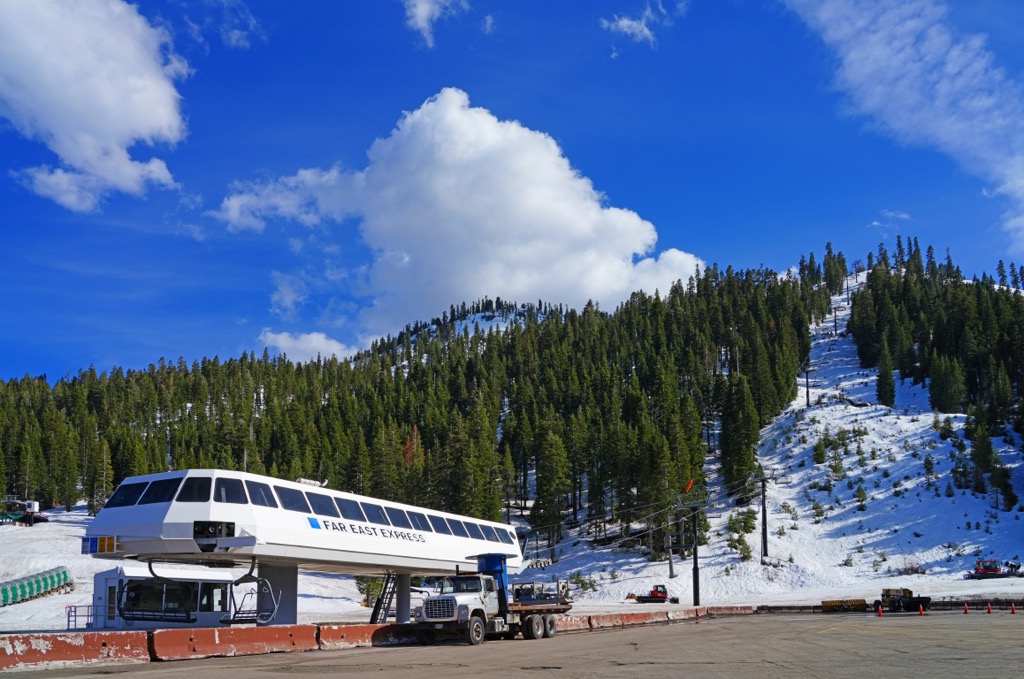
The quickest way to get to this bowl is to take Treeline Cirque Lift, get off at the midpoint, and then get on Alpine Bowl Chair. You can traverse the summit of Ward Peak and stare down into an endless expanse of trees and open fields. Getting to the best terrain requires staying as high as possible on the ridge for as long as possible. When you see a line you like, drop in and enjoy. There’s no return lift from the bottom of this face to the top of Ward Peak, so you’ll have to take Sherwood and Alpine Bowl Chair for another lap.
What you might not consider doing is heading to the lookers’ left side of the resort. Scott Peak has some excellent, more secluded terrain. It’s one of the best zones to escape the crowds and take your time while exploring long stretches off-piste. There are exciting cliffs and trees to ski on this side, and it’s a top choice on powder days.
If you like freestyle terrain, Alpine Meadows has a few parks, too. Treeline Cirque Chair and Yellow Chair have smaller rail and jump parks that can be fun to chain together.
Palisades Tahoe has been a mill for pro skiers and athletes on the world scale for the better part of the last century. It’s called the Olympic Valley because it hosted the 1960 Winter Olympics. Still, this valley has produced an inordinate number of Olympians since, including Tamara McKinney, Julia Mancuso, Daron Rahlves, and Johnny Mosely.
Even more impressive is how Palisades Tahoe vaulted extreme freeskiing into the American and world consciousness. Scot Schmidt became one of the godfathers of extreme skiing after the film Blizzard of Ahhhs showed him hucking 60+ foot airs (20 m) onto 210cm skis in the mid-80s.
Twenty years later, Shane McConkey went on to completely re-revolutionize the sport as a big mountain stuntman. Today, Palisades Tahoe remains the home base for some of freeskiing’s most influential pros, such as Cody Townsend and his wife, Elyse Saugstad.
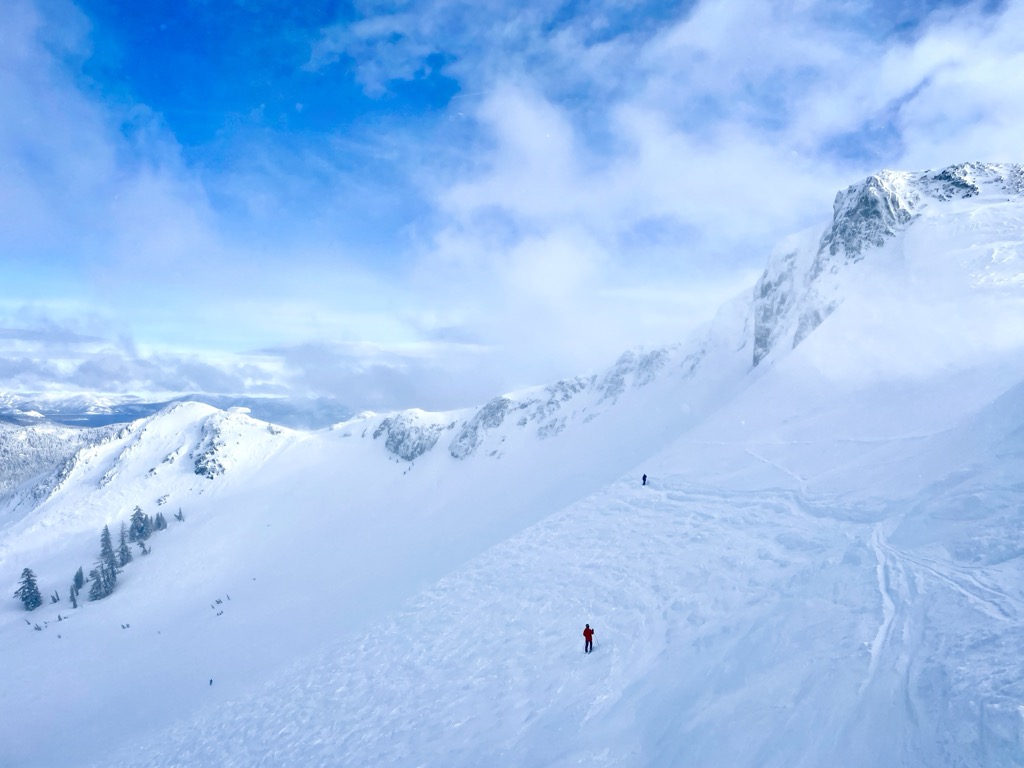
Palisades Tahoe has many attributes that make it one of the most iconic ski resorts in the world. However, it’s not all peaches and cream. Here are some frustrating aspects of the ski experience.
Like many big resorts in the US, Palisades Tahoe has too many people. In fact, this place is an absolute zoo during weekends and holidays in peak season. It’s not just long lift lines or tracked powder in 45 minutes; it’s the number of people surrounding you on the trails while skiing down the mountain.
The sea of cars in the parking lot. The impossibility of finding a seat at a restaurant and the certainty of having to wait an hour for overpriced food. Tahoe is one of the premier tourist destinations in the country, and there are day trippers and weekend warriors from the cities (Sacramento and San Francisco).
Many locals have long since moved on to smaller, less exciting mountains in exchange for solitude.
The flip side is that the resort is so big, you can always find a quiet area of the mountain if you know where to look.
Palisades Tahoe gets a lot of snow, but the snow conditions are variable. You might even say ‘very’ variable. Sierra Cement is guaranteed to thrash anyone but the most grizzled locals. Rock-solid refreeze is not much better. Once things are chopped up on a powder day, the remaining chunder is liable to tear your knee in half. Bluebird powder days bring the masses and clog the lift system.
Often, the best time to ski is the spring when you have the mountain to yourself and reliably soft snow conditions for most of the day.
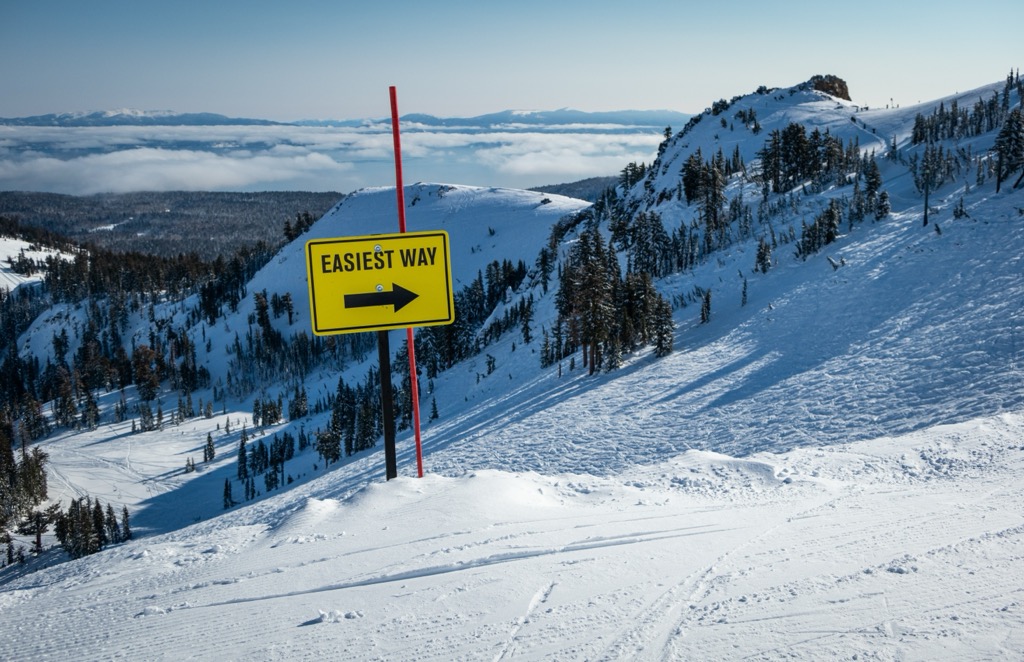
Like most ski resorts, the best way to save money at Palisades Tahoe is to buy your day pass in advance. Single-day tickets range from $99 (months in advance) to $134 (six days in advance) to $200 (same-day). The resort also sells day tickets in 2 and 3-packs for a small discount.
Considering the amount of terrain and variability of snow conditions from week to week, there is no better way to see Palisades Tahoe than to spend a whole season here. If you decide to do so, you have two options: an IKON Pass or the Palisades Tahoe Season pass. However, the Palisades Tahoe Season Pass is a bit of a scam - you should buy the IKON Pass. Continue reading below.
Season pass prices fluctuate from year to year - which is to say, they go up a little bit every year. But in the ‘22-’23 season, adult passes (age 18+) cost $1,599. The IKON pass, which gets you unlimited days at Tahoe with no blackout dates, is $1,159 or $1,059 renewal. The IKON also has unlimited access to 14 other resorts and at least seven days of access to more than 50 resorts. The IKON Base Pass is similar but with the standard blackout days and only five days at the other resorts. You also get 25% off friends and family.
I can’t see any advantage to having the more expensive Palisades Tahoe season pass. If you’re spending the season here, buy the IKON Pass.
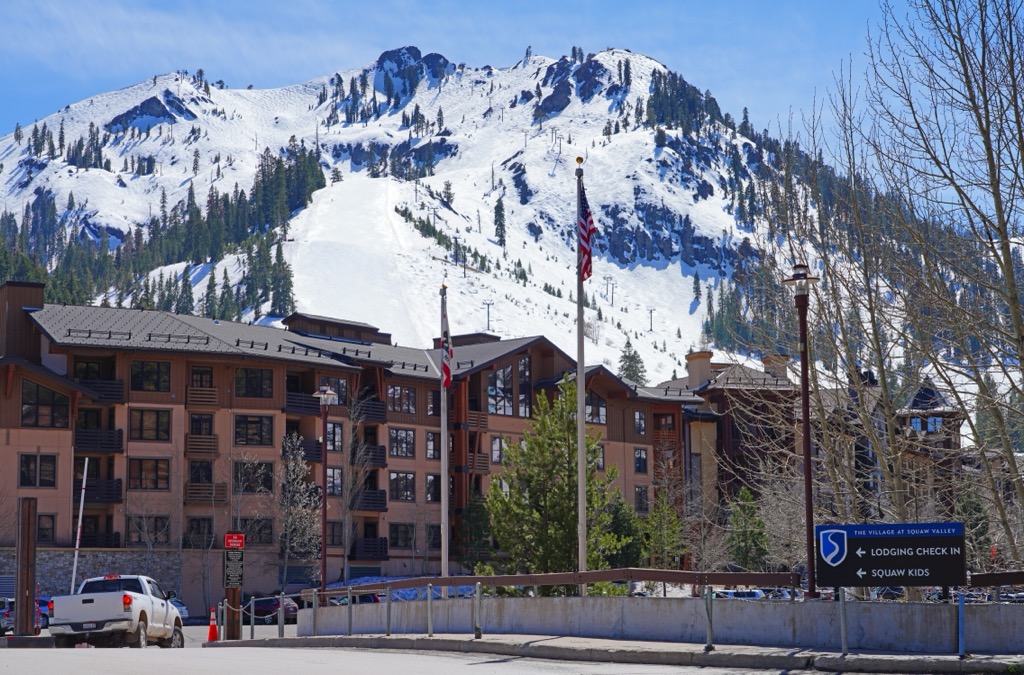
Visit the resort’s and the region's official tourist offices, located in Olympic Valley and the town of Tahoe City:
Palisades Tahoe Ski Resort Info
1960 Squaw Valley Road, Olympic Valley, California (CA), 96146, United States
Reservations: 800.403.0206
Resort Phone: 530.452.4331
General inquiries: info@palisadestahoe.com
North Tahoe Visitor Center
100 N Lake Blvd, Tahoe City, California (CA), 96145, United States
10 am to 4 pm, seven days a week
+15305816900
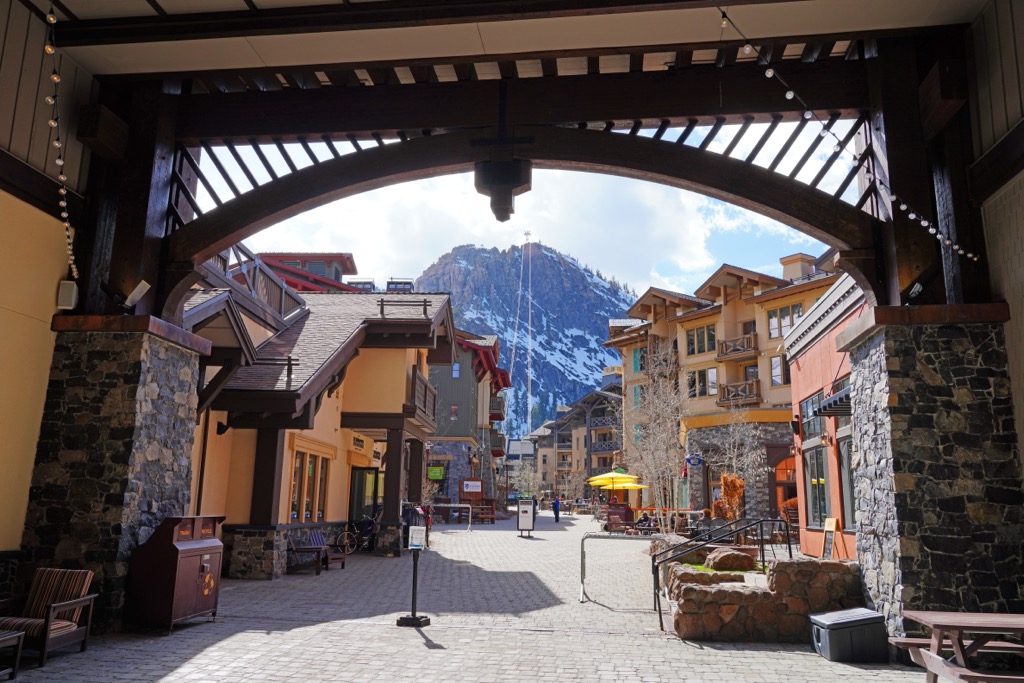
There is quite a lot of infrastructure at Palisades Tahoe. The Olympic Valley side has a whole village at the base and two huge lodges on the upper mountain. Alpine Meadows has a frontside lodge and a backside lodge. All of the above options have places to eat and drink.
The Village at Palisades Tahoe, at the base of Olympic Valley, has the most options by far. Everything from American food and cocktails to spicy chicken sandwiches to Irish pub fare is within a stone’s throw. The village also has a few coffee shops, a crepe cart, and even an ice cream parlor.
Gold Coast Lodge is my favorite spot to stop for a mid-day beer. The Arc is a solid ski bar with small eats also available. Funi’s Mountaintop Cafe is perfect for a quick bite as you hop off the Funitel.
High Camp has its own spread of options. Granite Bistro has an excellent selection of light and hearty food, and the Terrace Restaurant and Bar has a scenic panorama to enjoy while you eat and drink. Both High Camp and Gold Coast Lodges have a marketplace for food and drink on the go.
Alpine Meadows also has good options. MOGROG Cafe does breakfast and lunch, The Chalet is a German beer garden, and Last Chair Bar is the number one place to grab some après after the last chair. And if it’s only noon and you need to cool your heels on the back side, pop into Ice Bar.
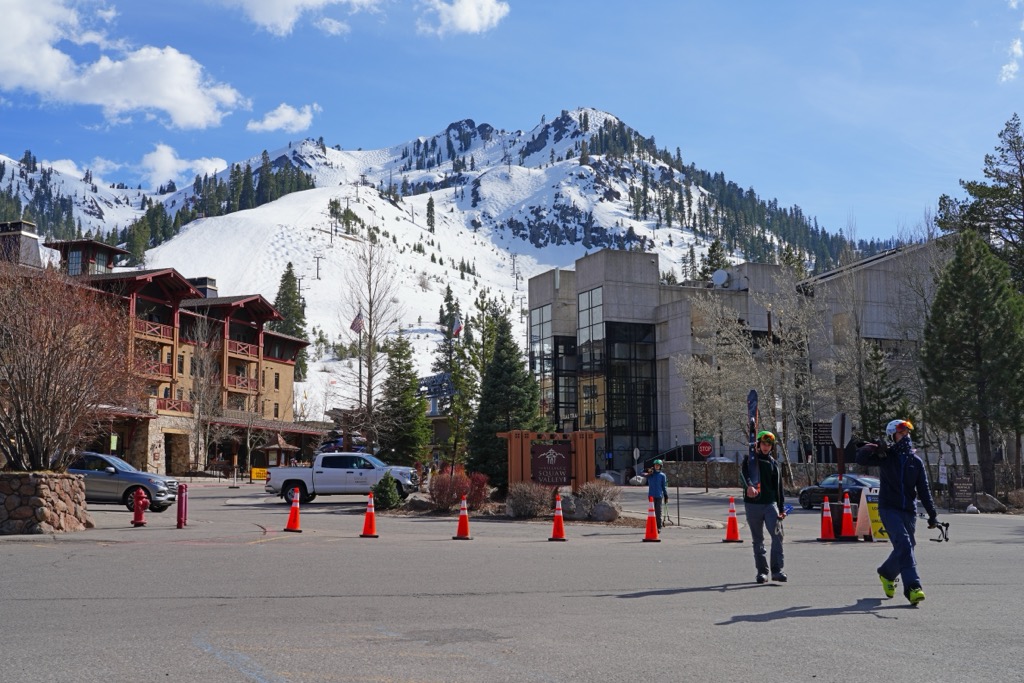
Navigating the options for lodging around Palisades Tahoe can be a little daunting, but only because there are so many options. While looking for a place to stay, it’s important to remember that the resort is not the only spot in the area to stay. Cozy cabins, lodges, and hotels surround Lake Tahoe.
Budget-wise, you’ll have no trouble finding something either cheap or extravagant. If you go the AirBnB route, you can find everything from single rooms to entire homes at the resort, around the lake, or in Truckee. You can expect to pay around $100 per night working on a budget. These accommodations are usually single rooms or apartments. At a mid-range budget of $250 per night, you’ll see more condos and homes, including options within walking distance of the resort’s base.
High-end budget accommodations start around $500 per night and go well above $1,000 per night. The resort operates some of the most luxurious lodging in Lake Tahoe.
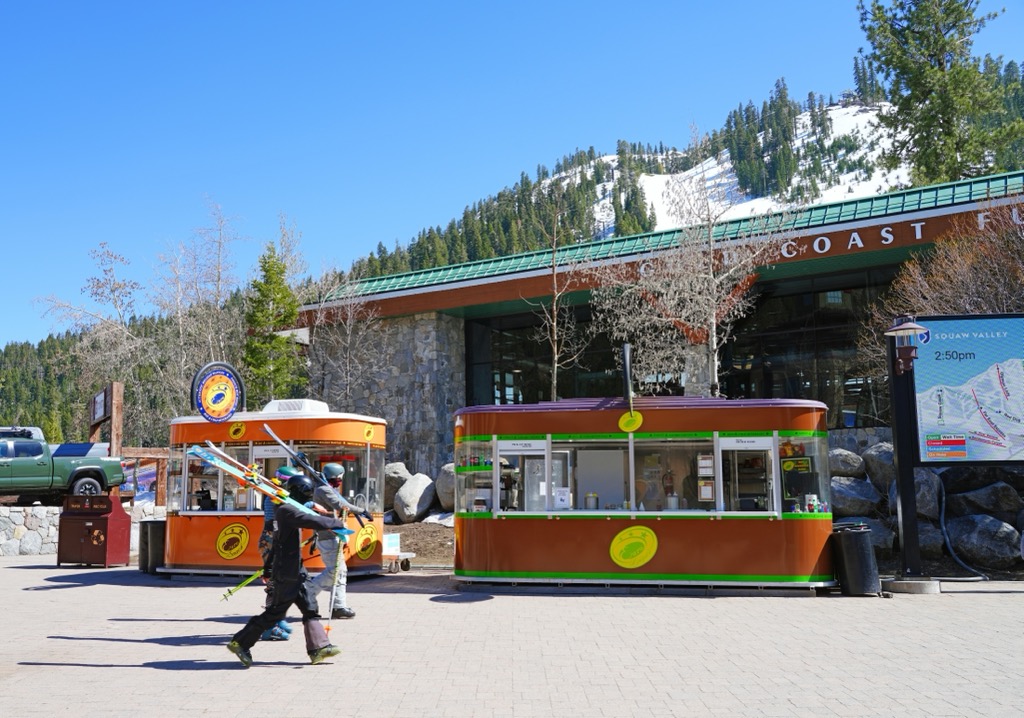
The Village at Olympic Valley is like a self-contained city. There is always something to see, eat, drink, or enjoy. The resort’s events calendar is updated regularly with live music, bingo nights, tastings by local breweries, races and relays, and freestyle competitions. There is live music at a few venues several times weekly. Annual events like the spring pond skim and snow golf tournament are a blast. Read up before visiting the resort to see what’s happening. Typically, the best events happen around New Year and in the spring.
If the resort makes it to the 4th of July, the closing day party will likely blow your socks off if you’re willing. From shirtless and bikini laps, impromptu freestyle mogul competitions, live music, and many, many pints of beers, this closing day party will be equally hard to forget as it is to remember.
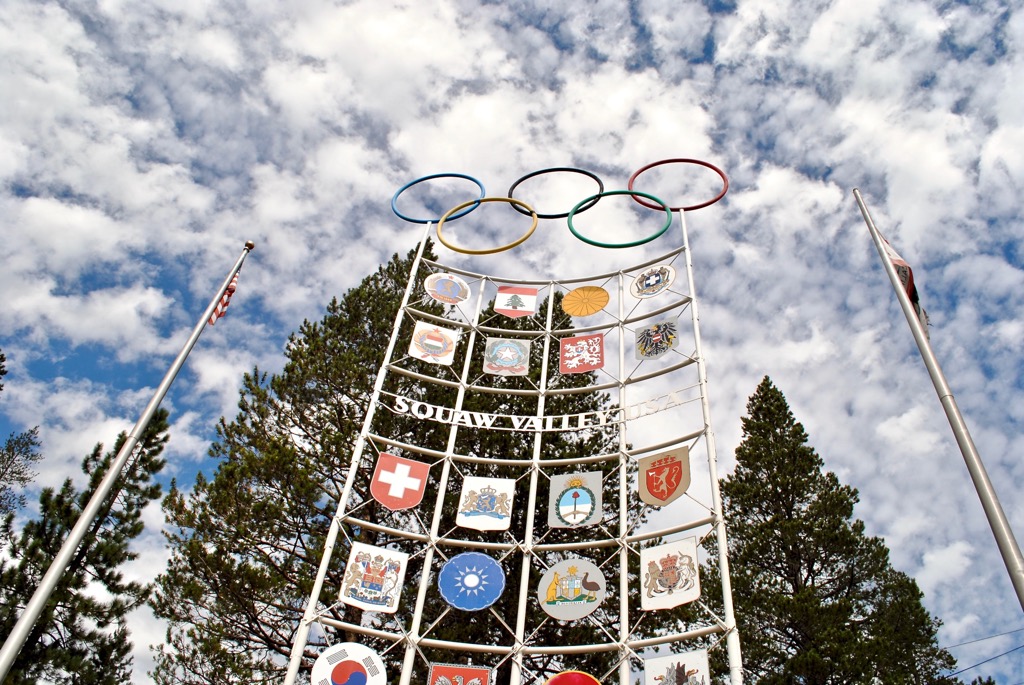
The nearest town to Palisades Tahoe is Tahoe City, the best bet for lodging and groceries outside the resort. If you head north, away from the lake, you will arrive at Truckee, CA. Truckee is much bigger and is a major stopover along Interstate I-80. It has an airport (Truckee Tahoe Airport) and other amenities you won’t find closer to the lake.
Ski resorts surround the lake itself. Palisades Tahoe’s closest neighbor is Northstar, right outside Truckee. Homewood Mountain Resort sits on the lakeshore, a 20-30 minute drive south of Palisades. Diamond Peak is also across the Nevada state border on the lake’s north side. These three mountains are significantly smaller than Palisades but still have much to offer. The other large resort around Lake Tahoe is Heavenly. Heavenly is on the opposite side of the lake, in South Lake Tahoe. Its defining feature is its vertical drop, climbing 3,812 ft (1,162 m) from base to summit.
